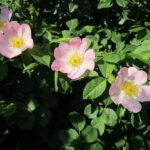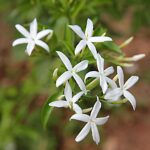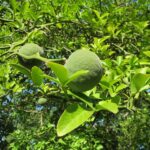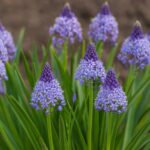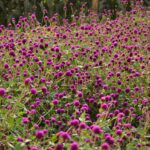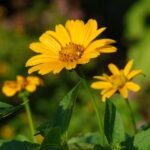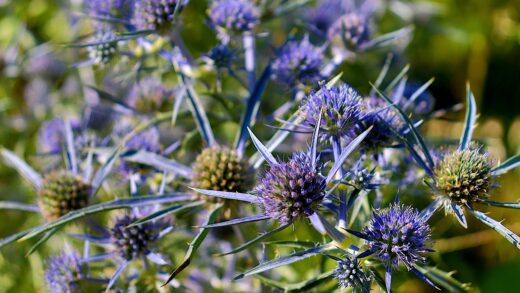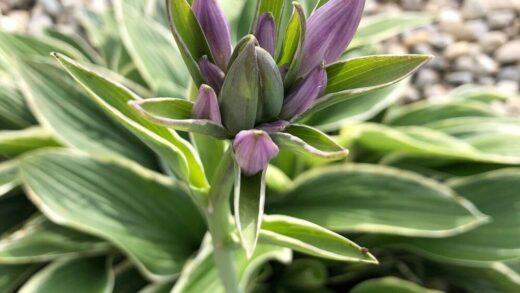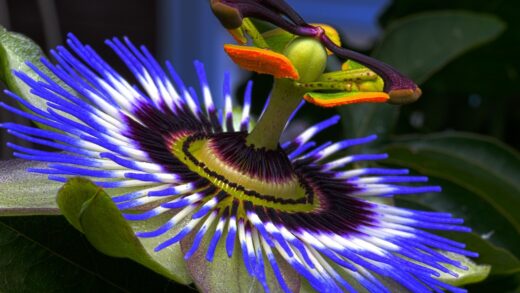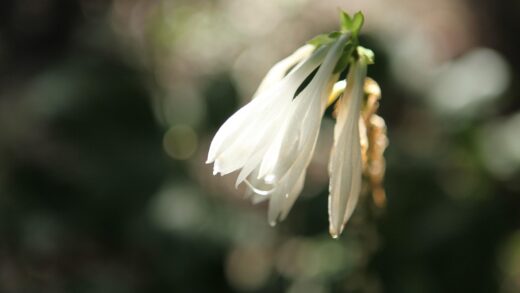Understanding the specific water requirements of the bouvardia flower is fundamental to its successful cultivation, as improper irrigation is one of the most common pitfalls for gardeners. This plant requires a delicate balance; it thrives in consistently moist soil but is extremely intolerant of waterlogged conditions which can quickly lead to root rot. The key is to mimic the moisture levels of its native subtropical habitat, where it would experience regular rainfall followed by periods where the soil is allowed to dry slightly. Achieving this balance requires careful observation of the plant and the soil, as well as an understanding of how its water needs change throughout the seasons. Mastering the art of watering bouvardia will result in a healthier, more resilient plant capable of producing an abundance of its signature fragrant blooms.
The frequency of watering for a bouvardia plant is not based on a rigid schedule, but rather on the actual moisture level of the soil. The most reliable method to determine if it’s time to water is to check the top 2-3 centimeters of the soil with your finger. If this top layer feels dry to the touch, it is time to provide a thorough watering. If it still feels moist, it is best to wait another day or two and check again. This method prevents both underwatering, which can cause wilting and stress, and the more dangerous overwatering.
During the active growing season of spring and summer, when the plant is producing new leaves and flowers, its water needs will be at their highest. You may find yourself watering every few days, especially during warm, dry weather or if the plant is in a smaller container. In contrast, during the winter dormancy period, the plant’s metabolic processes slow down significantly, and its water requirements decrease dramatically. In these cooler months, you should reduce the frequency of watering substantially, allowing the soil to dry out more between waterings.
Environmental factors play a significant role in how quickly the soil dries out and, consequently, how often you need to water. A bouvardia grown in a warm, sunny, and low-humidity environment will require more frequent watering than one grown in a cooler, shadier, or more humid location. The type of pot also has an impact; plants in porous terracotta pots will dry out faster than those in plastic or glazed ceramic containers. Therefore, it is essential to adjust your watering practices based on your specific growing conditions rather than following a one-size-fits-all rule.
When you do water, it is crucial to do so thoroughly and deeply. Apply water slowly to the soil surface until it begins to drain freely from the bottom of the pot. This ensures that the entire root ball is saturated and encourages the roots to grow deep into the pot. After a thorough watering, be sure to empty any excess water that has collected in the saucer beneath the pot. Allowing the pot to sit in standing water is a common mistake that can lead to waterlogged soil and the onset of fatal root diseases.
More articles on this topic
The importance of proper drainage
For bouvardia, the importance of proper drainage cannot be overstated; it is just as critical as providing water in the first place. These plants have a fine root system that is highly susceptible to rot when deprived of oxygen in saturated soil. Excellent drainage ensures that while the soil can hold onto the moisture the plant needs, any surplus water is able to escape quickly from the root zone. This is the single most important factor in preventing the deadly consequences of overwatering.
The foundation of good drainage starts with the choice of potting medium. A standard potting soil on its own is often too dense and will retain too much moisture for bouvardia. It is essential to use a potting mix that has been amended to increase its porosity. Adding materials like perlite, coarse sand, or small orchid bark to your mix creates air pockets within the soil, which allows water to flow through more freely and provides vital oxygen to the roots. A good rule of thumb is to aim for a mix where at least one-quarter to one-third of the volume is comprised of these drainage-enhancing materials.
The container you choose for your bouvardia also plays a pivotal role in ensuring proper drainage. It is imperative to select a pot that has at least one, and preferably multiple, drainage holes at the bottom. Without these holes, excess water has no way to escape and will pool at the bottom of the pot, creating an anaerobic environment that is toxic to the roots. When potting your plant, you can also place a layer of coarse gravel or broken pot shards at the bottom, although this is a traditional practice and less critical if you are using a very well-draining soil mix.
Beyond the soil and the pot, your watering technique contributes to maintaining good drainage. Avoid frequent, shallow waterings, as this can lead to a buildup of mineral salts on the soil surface and does not encourage a strong, deep root system. Instead, stick to the practice of watering deeply and infrequently. This thorough flushing of the soil helps to wash away any accumulated salts and ensures that the lower levels of the soil receive adequate moisture without remaining constantly wet, promoting a healthier root environment overall.
More articles on this topic
Recognizing signs of over and underwatering
Learning to recognize the visual cues your bouvardia gives you is key to diagnosing watering issues early. Overwatering and underwatering can sometimes present with similar symptoms, such as yellowing leaves, so it’s important to look closely and always check the soil before making a conclusion. The most common sign of underwatering is wilting, where the leaves and stems droop and appear limp. The leaves may also feel dry or crispy and may start to turn brown at the edges before eventually falling off.
If you suspect underwatering, the solution is straightforward: give the plant a thorough watering. For a severely dehydrated plant in a container, you can try bottom watering. Place the pot in a sink or basin with several centimeters of water and allow the plant to soak up moisture through its drainage holes for about 30-45 minutes, or until the top of the soil is moist. This method ensures complete rehydration of the root ball. After a good drink, a wilted plant will often perk up within a few hours.
Overwatering, while sometimes causing wilting as the rotting roots can no longer absorb water, often presents with slightly different symptoms. The leaves may turn yellow and feel soft or mushy, rather than dry and crispy. You might also notice a general lack of vigor, stunted growth, or leaf drop. The most definitive sign of overwatering is found at the soil level; the soil may feel consistently soggy, have a sour or swampy smell, or you may even see fungus gnats hovering around the surface.
If you diagnose overwatering, immediate action is required to save the plant. Stop watering immediately and move the plant to a location with good air circulation to help the soil dry out. In severe cases, you may need to carefully remove the plant from its pot to inspect the roots. Healthy roots should be firm and white, while rotted roots will be brown, soft, and mushy. Trim away any rotted portions with sterile scissors and repot the plant in fresh, dry, well-draining soil.
Water quality considerations
While the quantity and frequency of watering are paramount, the quality of the water used can also have a long-term impact on the health of your bouvardia. Tap water in many municipalities is treated with chemicals like chlorine and fluoride, and it can also be “hard,” meaning it has a high concentration of dissolved minerals such as calcium and magnesium. While bouvardia is not as sensitive as some houseplants, over time, these minerals can build up in the soil and on the pot, potentially altering the soil’s pH and affecting nutrient uptake.
If you notice a white, crusty buildup on the surface of the soil or around the rim of your terracotta pot, it is a sign of mineral accumulation from hard water. This can be mitigated by periodically flushing the soil. To do this, slowly pour a large amount of water through the pot, allowing it to drain freely for several minutes. This leaching process helps to wash away the excess mineral salts from the soil. Using distilled water, filtered water, or rainwater for your regular waterings will prevent this issue from occurring in the first place.
Chlorine, which is added to tap water to make it safe for drinking, can be harmful to sensitive plants in high concentrations. Fortunately, chlorine is volatile and will dissipate from water if it is left to sit in an open container for 24 hours. If you are concerned about the chlorine levels in your tap water, simply fill your watering can the day before you plan to use it and leave it out overnight. This simple step allows the chlorine to evaporate, making the water safer for your plants.
The temperature of the water is another small but important detail. It is always best to use water that is at room temperature. Using very cold water can shock the plant’s root system, causing stress and potentially leading to leaf drop. Conversely, water that is too hot can damage the roots. By using tepid or room-temperature water, you provide a gentle and stress-free drink for your bouvardia, contributing to its overall health and well-being.
Adjusting watering for seasonal changes
The water needs of a bouvardia are not static; they fluctuate significantly with the changing seasons, and adjusting your irrigation practices accordingly is essential for year-round health. The most dramatic shift occurs between the active growing season of spring and summer and the dormant period of autumn and winter. As the days grow shorter and temperatures cool in the fall, the plant’s growth naturally slows down, and its demand for water decreases in tandem.
During the spring and summer, when the plant is actively growing, producing foliage, and flowering, you should maintain a consistently moist soil environment. This is the period of peak water consumption. Check the soil every few days, especially during hot spells, and water thoroughly whenever the top layer becomes dry. This steady supply of moisture is crucial to support the plant’s high metabolic rate and to prevent stress that could inhibit flowering or cause bud drop.
As autumn sets in, you should begin to gradually reduce the frequency of watering. The combination of lower light levels and cooler temperatures means the soil will take much longer to dry out. Allow the soil to become noticeably drier between waterings than you would in the summer. This transition helps to signal to the plant that it is time to enter its dormant phase. Continuing to water with the same frequency as in the summer is a common mistake that can easily lead to root rot during this vulnerable period.
Throughout the winter, the bouvardia will be in a state of rest, and its water needs will be minimal. During this time, it is critical to water sparingly. Allow the soil to dry out to a greater depth between waterings, perhaps watering only once every few weeks, depending on your conditions. The goal is to provide just enough moisture to keep the roots from completely desiccating. Come early spring, as you see signs of new growth, you can gradually begin to increase the frequency of watering again, heralding the start of a new growing cycle.








